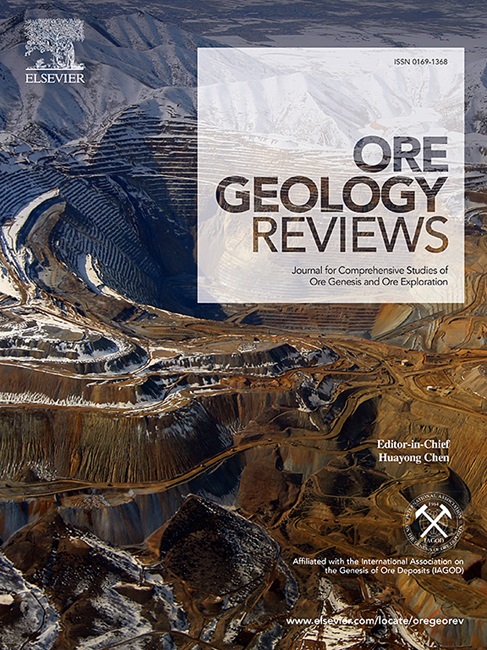Petrogenesis, magmatic and metamorphic evolution of Salem granite: Implications for the Damara Orogeny
IF 3.2
2区 地球科学
Q1 GEOLOGY
引用次数: 0
Abstract
The Pan-African Orogeny induced extensive magmatic activity in the Central Zone of the Damara Orogenic Belt in Southwest Africa. However, the genesis of these granitoid complexes remains a subject of considerable uncertainty. The Salem granite, situated within the Central Zone of the Damara Orogenic Belt, serves as a prime subject for the investigation of the tectonic evolution of this belt. This paper utilizes a multidisciplinary approach encompassing petrography, whole rock geochemistry, U-Pb geochronology on zircon and monazite from quartz-monzonites and granodiorites collected from the Salem granitic complex. It discusses the petrogenesis, magmatic and metamorphic evolution, as well as its implication for the Damara Orogeny. The analysis of whole rock geochemical data suggests that the Salem granite are primarily peraluminous, ferroan, and alkali-calcic to alkalic in nature. These rocks exhibit elevated concentrations of high field strength elements (e.g., Th, U, Nb, Zr) and demonstrate light rare earth elements (LREE) enrichment relative to heavy rare earth elements (HREE). These geochemical characteristics bear a resemblance to those observed in A-type peraluminous granites. The magma may have undergone fractionation of plagioclase, biotite, and garnet during its evolution. Zircon and monazite U-Pb data reveal a magma crystallization age of 539–538 Ma, which overlaps with the extensive 540–490 Ma magmatic activity in the Damara Orogenic Belt. Their metamorphic age of 528–526 Ma is consistent with the 530–520 Ma regional peak granulite facies metamorphism. The metamorphic age of 501–484 Ma these granites coincides with the timing of the post-orogenic magmatism and uranium mineralization age of 500–480 Ma. Their Nb/Ta (19.0–71.2) and Zr/Hf ratios (83.5–146.0) are significantly higher than those of the depleted mantle (Nb/Ta = 17.5, Zr/Hf = 36.3) and crust (Nb/Ta = 12.4, Zr/Hf = 35.5), suggesting that the magma may source from an enriched mantle. The presence of large ion lithophile elements such as Pb, Rb and K indicates that the mantle-derived magmas interacted with the crustal material during their ascent. We propose that the magma source of Salem granite was primarily derived from the mantle and was subsequently contaminated by crustal materials during the continental collision of Congo Craton and Kalahari Craton.

求助全文
约1分钟内获得全文
求助全文
来源期刊

Ore Geology Reviews
地学-地质学
CiteScore
6.50
自引率
27.30%
发文量
546
审稿时长
22.9 weeks
期刊介绍:
Ore Geology Reviews aims to familiarize all earth scientists with recent advances in a number of interconnected disciplines related to the study of, and search for, ore deposits. The reviews range from brief to longer contributions, but the journal preferentially publishes manuscripts that fill the niche between the commonly shorter journal articles and the comprehensive book coverages, and thus has a special appeal to many authors and readers.
 求助内容:
求助内容: 应助结果提醒方式:
应助结果提醒方式:


